
Limitless sets and golden light. Never a bad thing. Photo: Jack Johns
Editor’s Note: This post is presented by our partners at Finisterre.
With swell hitting O’ahu, Maui, and California’s coastline, autumn 2023 in the Northern Hemisphere has officially arrived and winter 2024 is knocking at the door.
Storm systems are brewing, and if you haven’t seen a good swell at your local, rest assured, it’s coming. With rising surf comes shorter days, falling water temps, and cooler mornings, which begs the question: are you geared up?
Where Land Meets Sea
Cold conditions are a nonissue for British surfers, who regularly paddle out in 45-degree water (seven degrees Celsius). The folks at Finisterre are making that frigid paddle a little easier with the help of their Yulex wetsuits, designed with sustainability in mind.
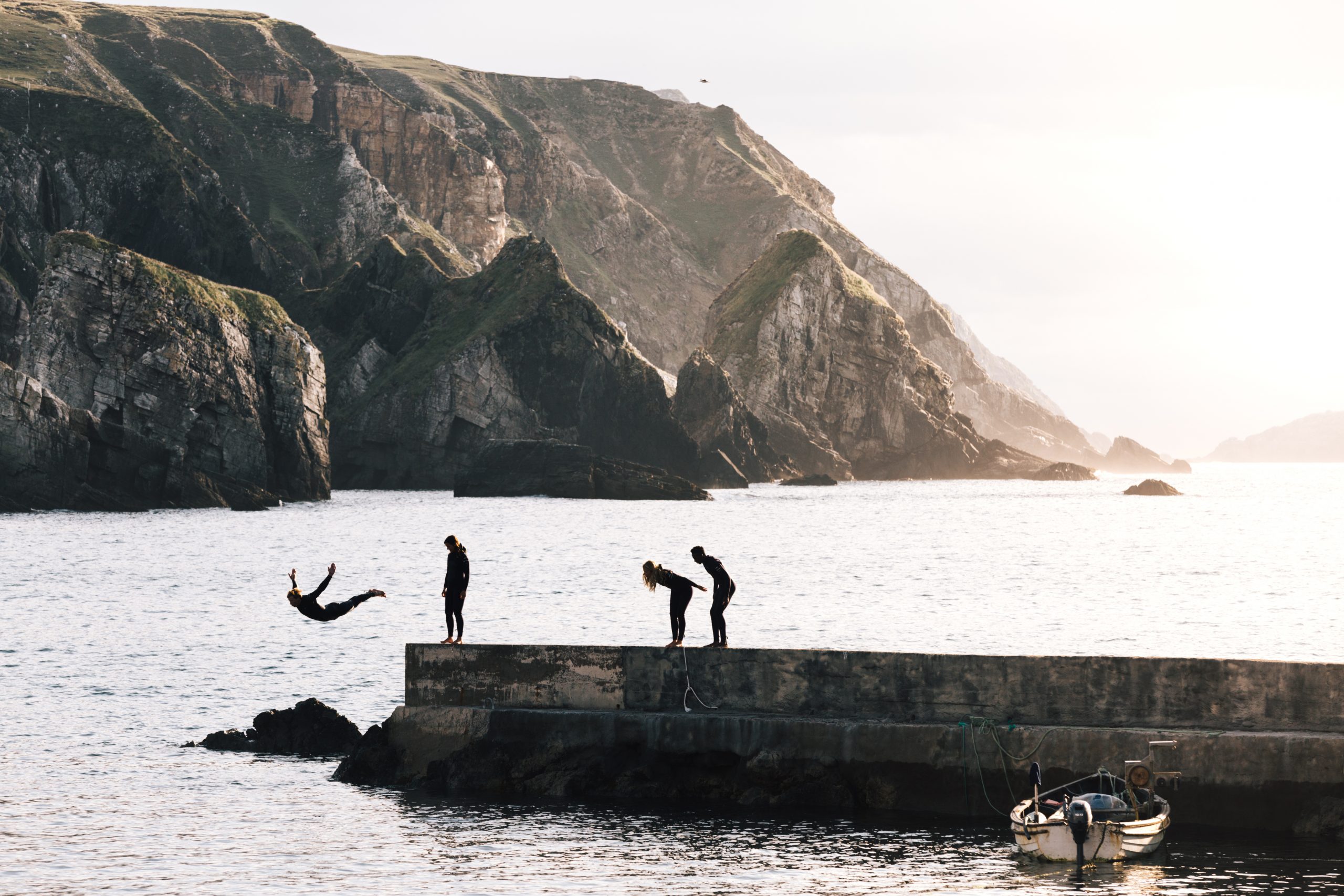
The Finisterre crew sends it off a jetty into frigid North Atlantic waters. Photo: Jack Johns
Named for the haggard headlands that bear the full force of the North Atlantic gales, and a former shipping forecast area, Finisterre literally means “end of earth.” The physical point where land meets sea has been a source of intrigue for humankind for a millennia. That real and romantic relationship runs deep in the brand’s narrative since its inception in 2003.
LEARN MORE ABOUT FINISTERREStarted in an apartment above a surf shop in St. Agnes, England, Tom Kay set out to make innovative products for dedicated British surfers and the lifestyles they lead. Functionality and sustainability have always been at the core of the brand’s ethos while aiming to innovate and develop wetsuits that can withstand the fiercest elements.
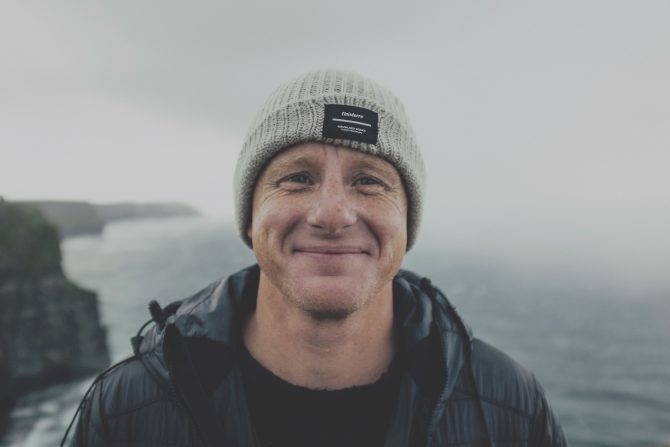
Despite the bustling business, Finisterre founder Tom Kay gets his turns. Photo: Matt Smith
Two decades later, the brand’s suits have been worn at some of the most remote surfing destinations in the world. From Nova Scotia to the Lofoten Islands, Iceland to the Bering Sea — plus all of the usual spots you’d expect.
They continue to be tested day in, day out in the harshest conditions. With a commitment to better manufacturing, both in materials and manufacturers themselves, Kay challenges the status quo by seeking production alternatives that are better for the planet.
“With growing numbers of surfers around the world, we’re presented with a great moment to instill this sense of stewardship within a new era of surfer and ocean lover,” said Finisterre’s Senior Community Marketing Manager, Lawrence Stafford.
“The outdoor industry in general has an incredible opportunity to rally its communities around environmental and climate goals,” he continued. “If all those who identify as outdoors people (surf, trail, snow, climb, bike, fish, etc) came together as one party or stance for the environment, we’d have a huge voting base to incite real change. For now, we can start with surfers and protecting our ocean playgrounds.”
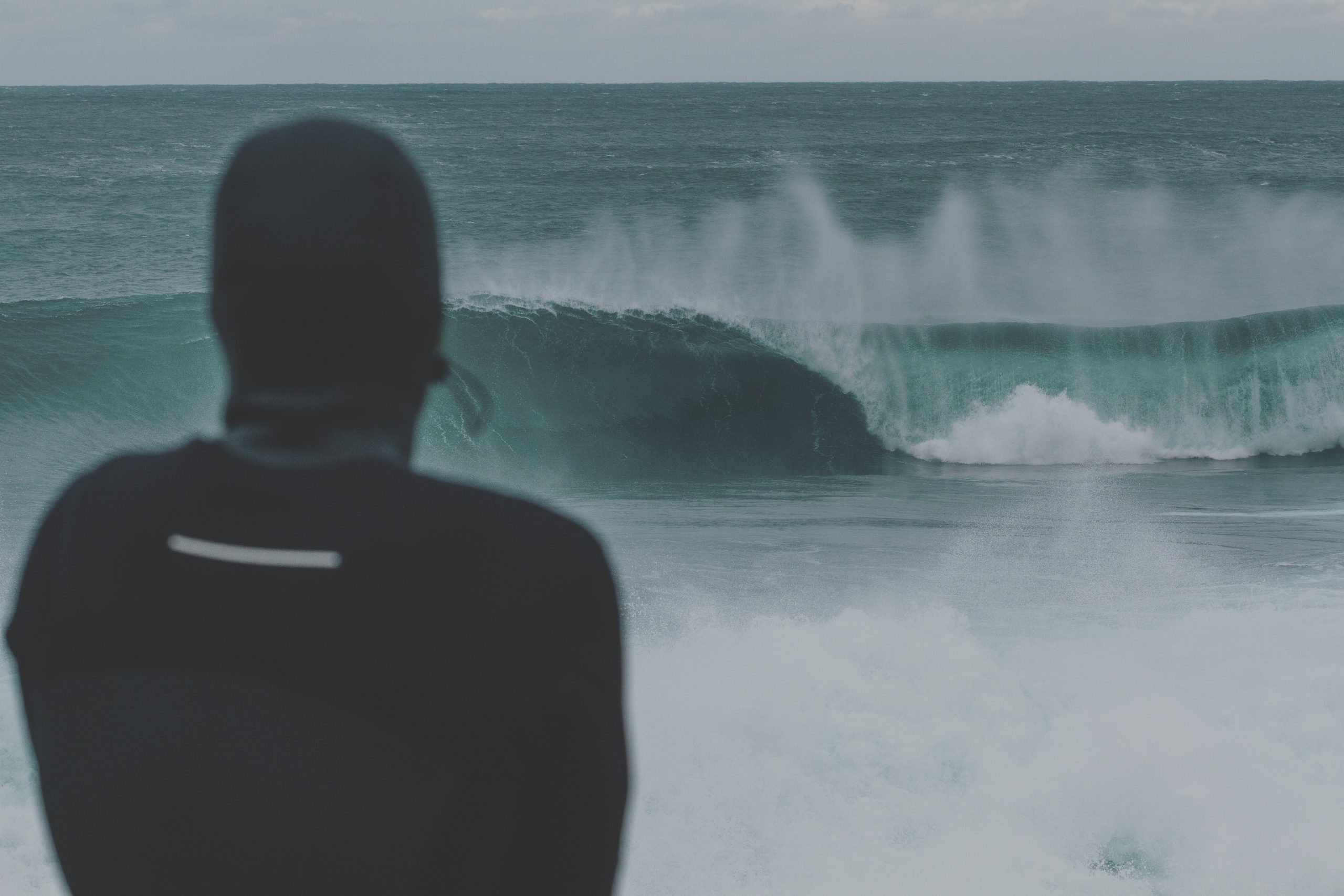
Cold or warm, clean barrels won’t wait. Photo: Chris McClean
Yulex: Neoprene’s Nemesis
One of the easiest products to reimagine was the wetsuit. A historically dirty product to produce with no clear end-of-life solution, neoprene is made from petroleum and carries a deep carbon footprint. Kay knew that he needed to challenge the industry standard and find a cleaner, more natural material to use as a wetsuit’s key ingredient.
With extensive research and sampling, Yulex rose to the forefront. A plant-based, natural source of rubber that produces 80% percent less carbon dioxide and uses ten times less water in production than neoprene, this was the solution Kay was looking for.
Yulex’s Production Process
A bit of background, to make Yulex, natural rubber emulsion is sourced from sustainably managed plantations of Hevea trees. That raw material is refined, purified, and concentrated using Yulex’s specialized technique.
From an environmental standpoint, Yulex is the way forward. Because it’s sourced from trees, the plantations are already absorbing huge amounts of carbon from the atmosphere, with around 1,400 kilograms of carbon dioxide sequestered per hectare of forest.
Unlike neoprene, Yulex production also uses around 10 times less water. The closed-loop system means any water used either remains in the finished materials or is a waste-product stream, which ends up in a conversion pond where it’s digested, cleaned and used to irrigate local crops or recharged to the aquifer.
When it came to assessing Yulex from a performance standpoint, the natural material hit the mark. It provides all the technical benefits of neoprene while eliminating the need for a petrochemical source. It’s highly flexible, durable, and can withstand a diverse range of sea temperatures.
After rigorous testing, in 2021 the brand’s entire wetsuit and new swimwear range began featuring the superior material.
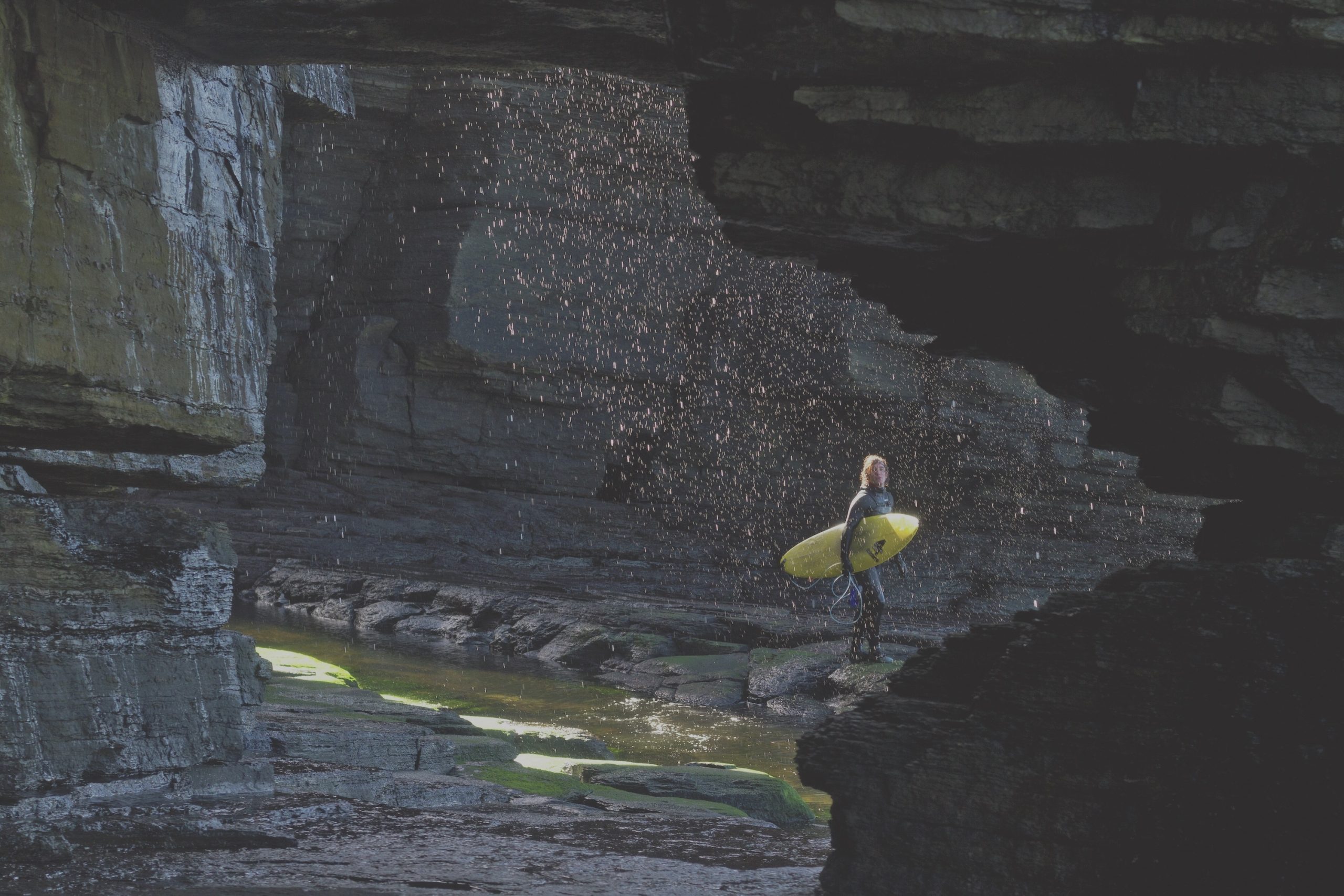
The journey to the surf can lead to some pretty amazing scenery. Photo: Al MacKinnon
Autumn + Winter Suits
The Men’s Nieuwland 5s Yulex Hooded Wetsuit is Finisterre’s warmest winter wetsuit with a built-in hood for sea temperatures of 45-50 degrees Fahrenheit (7-11 degrees Celsius). It’s designed for surfing in the coldest conditions, from British winters to arctic islands, and everything in between. The built-in hood, fully taped seams and custom shoulder pattern reduce flushing, keeping warmth in and cold water out. All without compromising flexibility.
SHOP NIEUWLAND 5MMIf you live in an area like California where the water falls more in the 51-59 degree Fahrenheit range (11-15 degrees Celsius), the Men’s Nieuwland 4s Yulex Wetsuit is a solid option. It’s a warm and flexible hoodless suit built for long autumn, winter, and spring surfs.
SHOP NIEUWLAND 4MM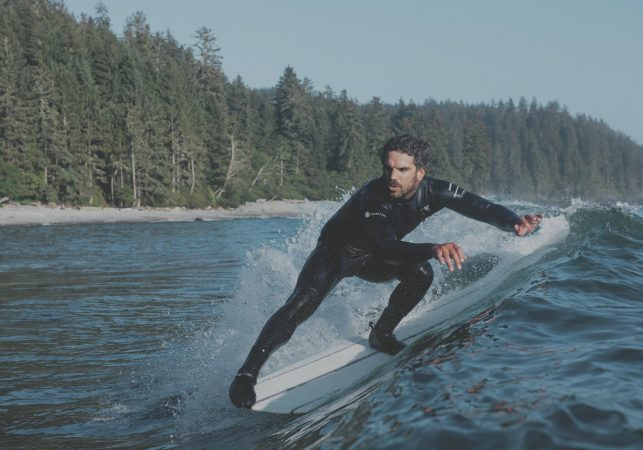
A surfer in the PNW puts it all out there. Photo: Jack Johns
Tried and Tested
Every step of the way, Finisterre has been putting Yulex through its paces (and hold downs), ensuring that it’s up to the the frigid task of keeping you warm on the coldest of sessions.
“Our surf team and ambassadors have been wearing Yulex across the board since our move to natural rubber over three years ago,” Stafford continued. “Feedback has been integral to the overall development of the category, but our suits are currently in a place where the flex, warmth, fit, and performance are the same if not better than their neoprene predecessor. Our athletes continue to ride waves of consequence in harsh testing environments with little to no compromise in performance.”

